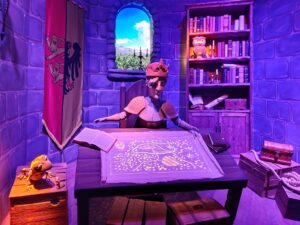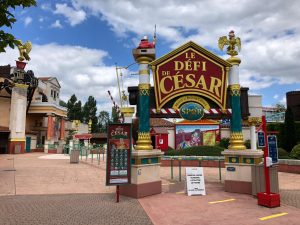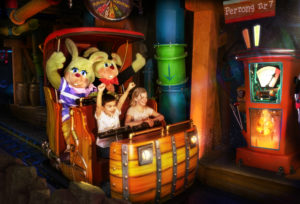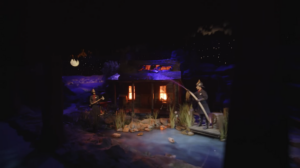
Many dark rides around the world use intellectual property (IP) from a third party for their story. To ensure the guest experience of the ride meets the IP standards, the design team must have regimented collaboration with the IP-holder. The lineage of Justice League attractions created by Sally Dark Rides over the last decade is a quintessential example of how an IP can be turned into an anchor theme park experience. We spoke with ‘Sally’s creative director and lead designer of Justice League, Rich Hill, regarding the development of these rides and to find out how a company like Sally Dark Rides designs a ride using the intellectual property of a third party.

Name: Rich Hill
Company: Sally Dark Rides
Since: 1999
Favorite (semi-) dark ride:
“It’s got to be Pirates of the Caribbean: Battle for the Sunken Treasure in Shanghai Disneyland. It’s a close one between Pirates and Rise of the Resistance. The mix of virtual and practical elements is overwhelming in both attractions. They are both seamlessly delivered to the point that I almost forget that I am in a dark ride when I ride them. I feel like I have a genuine experience. That’s when you know a dark ride is effective. It takes you out of the “dark world” and transports you to somewhere magical… a place that is tangible and feels real.”
Favorite show ride:
“When I was about 15 or 16, my friend and I walked through our local mall and saw this weird fiberglass box with hydraulics underneath it, sitting in the middle of the concourse. It was one of those small, two-passenger Doron simulators that you used to see everywhere. My eyes got big, and I said ‘whatever that thing is, pull out your money; we’re getting in it.’ We paid our $1.00, jumped inside, and sat down, ready for who knows what kind of experience. If you’ve ever ridden one of those simulators, you know that they had bad video quality, graphics that were not very well done, and a motion platform that was so shaky, it would pop the fillings out of your teeth. Even with all of that, I enjoyed the experience. It was a blast! That was a simulator (or, as you call them, “show rides”) that stood out to me. So, I’d say that the first unremarkable Doron simulator in the mall is my favorite. Disney’s Flight of Passage would probably be a close second.”
A precious IP
Most people are familiar with superheroes like Batman and Superman from comics and movies. Famous superheroes like Batman, Superman, Wonder Woman, and Green Lantern are all part of the DC Comics family. DC Comics has been publishing superhero comics since the 1930s. In the 1940s, they created the Justice Society of America, which included The Flash, and Green Lantern, along with six other heroes. Not much later, Superman and Batman joined the Justice Society of America.
During the 1960’s, the assembly evolved into the Justice League of America and is now mostly known as simply ‘Justice ‘League’. The Justice League movies were produced by Warner Bros. Pictures, whose parent company (Warner Bros. (WB)) also owns DC Comics. In 2008, DC and Warner released a couple animated feature films starring the Justice League, but it would take until 2017 before a live-action Justice League film was produced. The members of the Justice League in this cinematic universe are Superman, Batman, Wonder Woman, Aquaman, The Flash and Cyborg. This film franchise has grossed over $5 billion worldwide. Warner Bros. is still producing new movies that take place in this same universe. It’s safe to say that Justice League is one of Warner Bros.’ most precious IP’s.
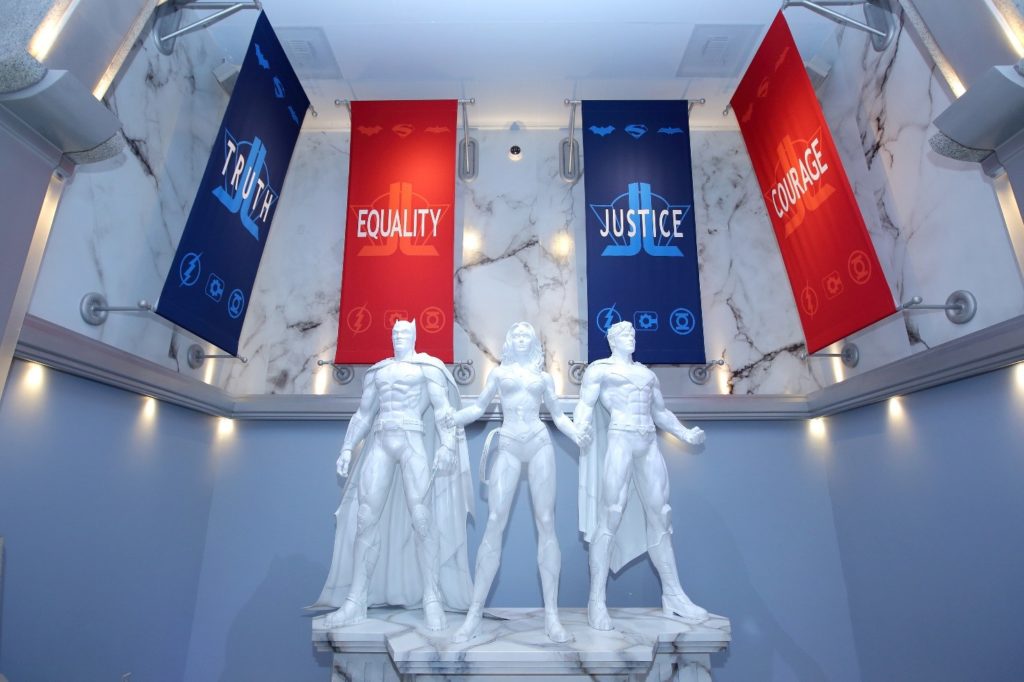
The invasion of Starro the Conqueror
For decades, many independent superheroes from DC Comics have starred in theme park rides, such as the Superman and Batman-themed roller coasters in various Six Flags parks. The Justice League IP was incorporated into a theme-park ride in 2010. The Australian theme park Warner Bros. Movie World decided to replace their Batman-simulator with an exciting new ride, which became an interactive dark ride based on Justice League. Warner Bros. Movie World is managed independently by Village Roadshow Theme Parks but holds contracts for the use of Warner Bros.’ IP. Even though the park holds these contracts, they are not allowed to just use these IPs in any way they want. Every usage of Warner Bros. IP needs to be approved by a subdivision of the Warner Bros. company called ‘Warner Bros. Global Brands and Franchises.’
After the park decided to replace the simulator with an interactive dark ride, they designed the new ride. They pitched it to Global Brands and Franchises, but the board did not fully agree with the ride’s design and storyline. To improve the ride concept, Movie World and Global Brands and Franchises decided to involve Sally Dark Rides in the project. Although Sally Dark Rides had never worked with Movie World or Village Roadshow Theme Parks before, they had worked together with Global Brands and Franchises, most notably on La Aventura de Scooby-Doo in Parque Warner Madrid. Sally Dark Rides was asked to help the park create a ride concept that would convince Global Brands and Franchises.
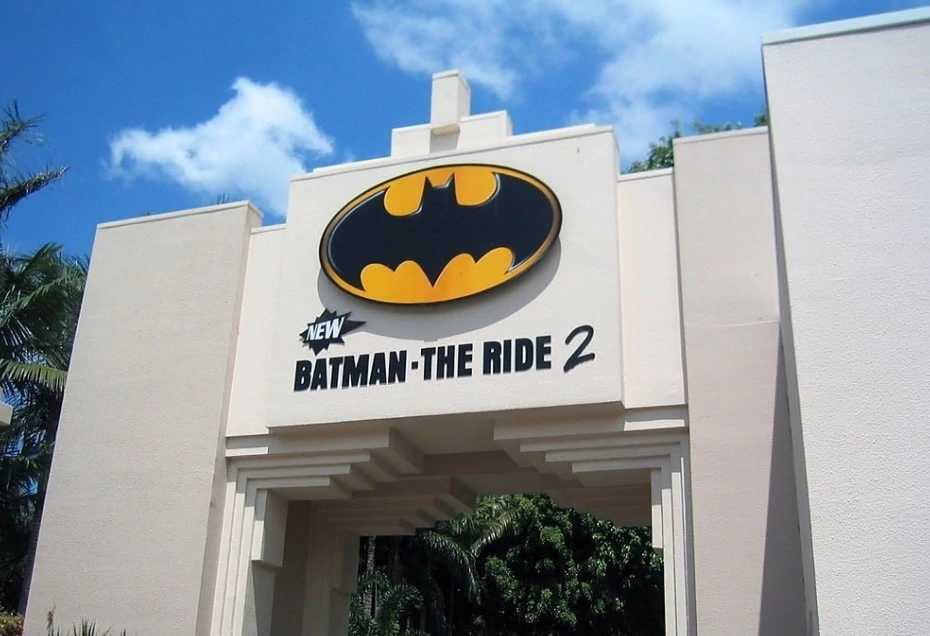
Sally Dark Rides appointed Rich Hill as the lead designer for Justice League. Rich had been with the company for 12 years, gaining experience and creative strengths working on dark rides. Warner Bros. Movie World wanted to use Starro the Conqueror (he was featured in the first Justice League of America comic – Starro the Conqueror, The Brave and the Bold #28 (Feb-March 1960)) as the main villain for the ride. This provided a jumping-off point for the team at Sally to start brainstorming. “I read tons of comic books as a kid, but I am not an expert by any means. However, I have a couple of friends that I would call Comic-Book-Super-Nerds. Early in the project, my friends were a great resource, acting as a litmus test to determine the characters and locations we wanted to use in the attraction. Of course, like any good researcher, our team hit the comic bookstore for source material,” Rich explained.
The story of ‘Queen ‘Starro’ (a starfish-like creature) is that she would travel planet to planet, unleashing her Starro Spores on the inhabitants, linking them telepathically to her; this is how Starro would take over planets. One day, Starro came to a planet called Hatorei and enslaved all of its psychically gifted inhabitants, except for one. When Starro latched onto him, he could use his abilities to enslave the Queen, thereby taking over the entire race of Starro’s. It turns out he wasn’t a very good guy either, so instead of freeing everyone, he decides to keep going with the plan of domination, traveling throughout the galaxy, gobbling up one planet at a time. That led his army of starfish to Earth, where the dark ride’s story begins.
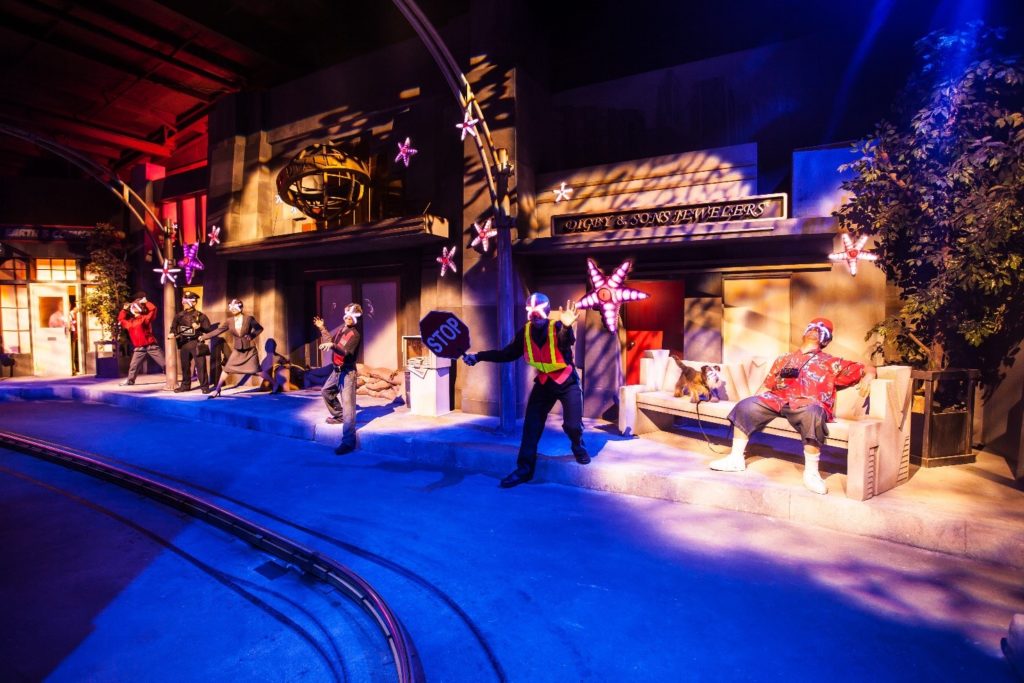
Sally developed a dark ride story with Starro as the lead villain. The concept and storyline were enough to convince DC comics. “It is challenging to create a strong storyline for a dark ride, as the ride time on a dark ride is limited. Movies have the luxury to be able to introduce you to a character, give a backstory. A dark ride is five or six minutes, maximum”. The ‘ride’s story has to rely on what riders already know, as Rich explains. “To tell a story efficiently, we try to draw on characters and places that people know, themes in pop culture that they have experienced before. In the case of Justice League, we needed to define the main characters early on. While some may not know the intricacies of who the Justice League team is, most people do know Batman, Superman, and Wonder Woman, so they were perfect choices to act as the primary storytellers in the attraction.”
Rich Hill went on to tell us that when deciding which heroes needed to star in the ride, it was determined that Batman would be the lead or ‘host’ character. In the ride preshow, we find out that the other Justice League Members are Cyborg, Wonder Woman, Supergirl, The Flash, Green Lantern and Superman. “Batman is the one that is going to help us by giving us our mission directives and backstory. He tells us that we need to get to Superman (who we learn is under the influence of a Starro Spore, being held inside an alien spaceship somewhere on Earth). On our adventure, the superheroes use their powers to help us fight the Spores, teleporting us by Boomtube from city to city, ultimately finding Superman so we can free him and defeat Starro”. Within the context of the ride, riders will be able to recognize the superpowers of the other heroes, even though they might not be familiar with the character.
During the development of the story, Rich and his team reviewed various line-ups of characters. One of the heroes that ‘didn’t cut was Aquaman. Rich told us: “Aquaman is a great character and visually interesting, but with Aquaman, we would need a huge water feature to make his moment in the ride convincing. Water effects can be expensive to create and problematic regarding maintenance. With all of the dark rides Sally designs and builds, we want them to be as maintenance-free as possible”. Aquaman was eventually left out because of practical reasons, but on the other hand, Supergirl was added later to the League to improve the storyline. “We needed a character with super strength who could catch a huge concrete wall that almost falls on us in Metropolis. Supergirl was the perfect Justice League superhero for that job! Also, we wanted to have an additional strong female character to help balance the team dynamic.”

Deciding how each hero would be introduced was challenging. Rich and his team decided to have each scene depict a superhero with his or her powers. “A superhero ride is the most difficult to design as it is hard to give the visitors real anticipation and a genuine fear of bad guys,” Rich tells us. Therefore, the ride concept of visitors witnessing the ‘superhero’s actions, and helping them, was more suitable for the Justice League dark ride. “Instead of trying to incite fear for the villain, we strived to elicit ‘wow”- or hero ‘moments’ by showcasing the ‘League’s incredible superpowers.'”
Rich and his team pitched the final concept to Warner Bros. and Movie World. The story was based on Starro trying to take over Earth and the Justice League needing help to fight him to save the world. Riders join the Justice League and travel through multiple cities from the comics. In each city, there is a superhero that helps the riders get closer to Starro’s spaceship by using specific powers. Eventually, the ride will take its visitors into the spaceship of Starro, where a final battle between the Justice League and Starro takes place. Movie World and Warner Bros. were very pleased with this concept and approved it for further development.
The IP managers oversaw the development of the story to ensure the consistency of the story and its adherence to the Characters. “WB and DC are building a universe that’s very holistic. The comics, movies, rides, T-shirts, hats, they are all part of this universe. They want to make sure every team is working towards the same goal. So they let everybody know independently without giving it away. When we got into writing the script and defining what riders will experience in the ride, they quickly told us like ‘oh, you can’t do that. I would ask: ‘well, is that something you will do in the movies or is it in the comics?’ They said, ‘Well, we can’t tell you yet, but you are on the right path. But we would officially like you to stay away from ‘this certain thing’ you’re talking about now.‘”
Combining powers to finish the job
With the ride concept approved by both the park and IP-holder, Sally began production and installation. As a turn-key ride producer, Sally was the main contractor. They worked with subcontractors to provide specific elements of the attraction It was Sally’s first attempt to combine physical scenes with 3D media. “Superheroes are so dynamic. They fly all over the place and they can lift heavy things. Some of these moments couldn’t be accomplished with a traditional technique, so a virtual environment was necessary.” All of which needed to be interactive as well, it required a lot of subcontractors to cooperate with each other.
The media scenes had to blend in with these physical scenes, which is not easy to do. “It was important that the media and the practical scenery and sets matched perfectly. The guest needed to feel like they were a natural extension of the scene.” To produce the media, Sally turned to Threshold Animated Studios (from California, USA.). Sally and Threshold worked closely together on creating the best audiovisual scenes for the ride.
The development process is as follows. “We start with a script and storyboards. Those are turned into an animatic (an animated storyboard). Then we have conversations to determine what works and does not from a timing standpoint. After that, the media team begins modeling, next comes animation and lighting. During this process, we make comments on the dailies, giving the animators notes. Threshold makes changes, then we send the ‘Sally Approved’ clips to Warner Bros. They review, make their notes and we go back and forth like that, making sure that the product speaks to the initial creative vision.”
Sometimes practical affects the virtual, sometimes the virtual affects the practical. “Sometimes we say, ‘Okay, we found this specific type of brickwork for our practical scenery, so in the media we need the digital brickwork to match it.’ There were also times where the media team has said ‘We would like to have a character leave the screen using this new alleyway to the left. So, we have the scenic team add a ‘LEFT TURN ONLY’ sign in the practical scenery. It works both ways.”
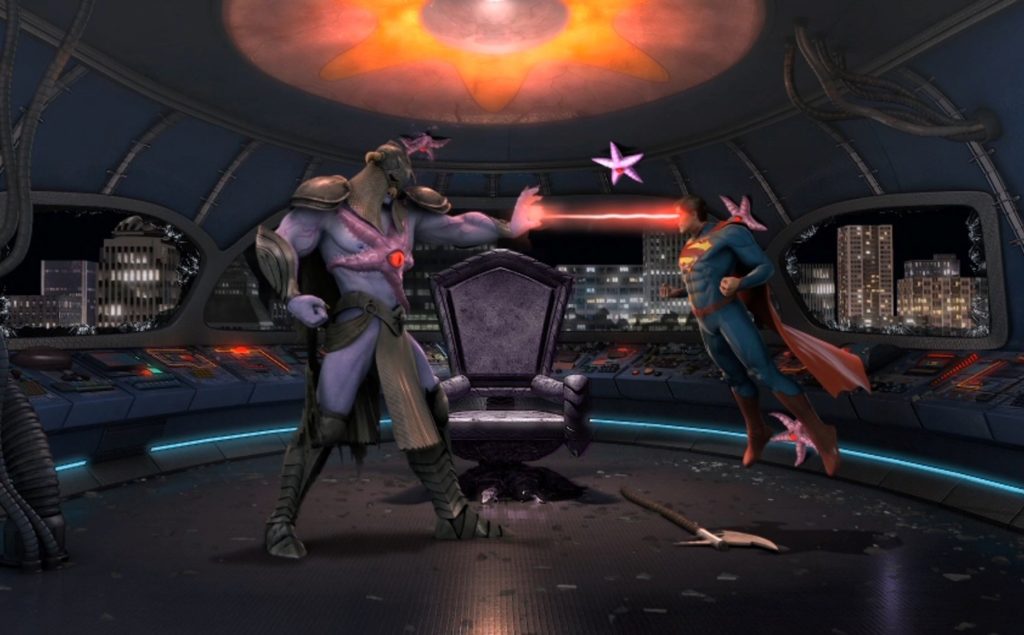
Not only did the ride use a combination of physical sets and 3D media, but it also incorporated practical and virtual targets so riders can shoot at the spores on various targets. To create a ride that could do that, Sally Dark Rides partnered up with Alterface. “Alterface made the integration between the game engine and the media. They had a custom game engine at the time that made practical targets and on- screen targets equally playable.”

Eventually, all these elements needed to be implemented together in the ride in Australia: physical sets, media, and interactive systems all came together. While working on the spot, Rich started wondering about a couple of elements they were using in separate parts of the ride. “We had an extra 3D Projector, and the client wanted to use it somewhere in the ride. I said we could try it on the fog screen but didn’t know if it would work,” Rich tells us. “We put it on the fog screen and put the glasses on, and boom, it was in 3D! It worked! Then I went to Alterface and said, ‘while we got this up here, can you do a test and see if it also works with targets. Can you shoot at the fog screen, and does it respond to it?’ One hour later, one of their R&D guys called and said it worked.” They could not implement it in the ride anymore, but they kept the idea in mind for the future. “Those are things you can only develop when you are on the spot, which is too expensive to develop as a special R&D project.”
After a year of development, the ride was finished. The storyline was clear, the interactive media was ready, techniques were implemented, and Warner Bros. Global Brands and Franchises had given their approval of the ride. Justice League: Alien Invasion 3D opened on 22 September 2012 at Warner Bros. Accolades for the ride poured in from the theme park industry and visitors of the park.

Justice League in America
The success of the ride did not go unnoticed. One of Sally Dark Ride’s previous clients, Six Flags Entertainment Corporation, was highly interested. The chain of theme parks in North America already held the rights to use DC Comics characters in their parks. “They saw what we did with the Alien Invasion ride and came to us, saying ‘Guys, we have been wanting to do a Justice League ride for a long time. We have held off because we weren’t sure that a dark ride could portray the superheroes in a dynamic, fun way. Now we see what you have done with Alien Invasion, we want you to take it to the next level in a way that will speak to our brand?'”
Six Flags wanted a ride that would expand upon what was created in Australia and fit with the culture of their parks. Les Hudson, VP of Design at Six Flags told Rich that they wanted to make the guests feel like superheroes themselves. “We want a real thrill experience,” they said, “it may be impossible, but can you create a roller coaster experience somewhere on the ride, too?” This required Sally’s design team to come up with a completely new concept.
“Based on their notes, we got started. Dark ride design always starts with a story. We started with identifying the villain and what they are doing along with questions like; ‘why are were here’, ‘what are the locations?” In addition, we discussed the type of technologies to use to tell the story. Six Flags had already determined the antagonists: The Joker and Lex Luthor.
Initially, the story would take place in the fictional Gotham City, the city of Batman. “When we pitched the idea to Warner Bros. and DC comics, they like the story but asked if we could use Metropolis instead of Gotham. If you know these places from the comics, you understand that is a drastic change. I reworked the ride brief over the weekend, pitched it to the team one more time and this time got the green light.” Justice League: Battle for Metropolis was born.

“We came up with a story where Lex Luthor wants to take over Metropolis and he brings the Joker over from Gotham City to help create chaos in the streets of Metropolis. Using the superhero’s weaknesses, he captures four out of seven team members and holds them inside Lexcorp. Rider’s must make their way through the streets of Metropolis to free the League and make the bad guys pay for their actions.”
By removing most of the Justice League Super Hero team, there is a greater need for the guests to contribute. Rich and his team developed the storyline and the characters for the new ride; they faced another big challenge. They needed to use a special ride vehicle to pull the riders straight into the action and create a convincing feeling of being a superhero. Rich sought to create this experience using a motion-based vehicle, similar to those developed by Oceaneering Entertainment Systems. The motion platform built within the vehicle allows the cabin to pitch, spin and rotate like a motion simulator. The best-known installation of such a system by Oceaneering is The Amazing Adventures of Spider-Man in Universal’s Islands of Adventure. However, such a ride system would generally require a larger budget.
“We decided by making the vehicle six-passenger, perhaps it would be more cost-effective,” Rich says. Initially, Oceaneering was not eager to design completely new ride vehicles but realized that this could open up an entirely new market for them. “We designed the look of the vehicle and gave OES the basic specifications, and they ran with it. The ‘EVO-6’ vehicle has been a very successful product for them. I believe it has been used in more ride installations than any other ride vehicle Oceaneering has manufactured. It’s a pretty special vehicle. It has a similar feel to their bigger systems.”
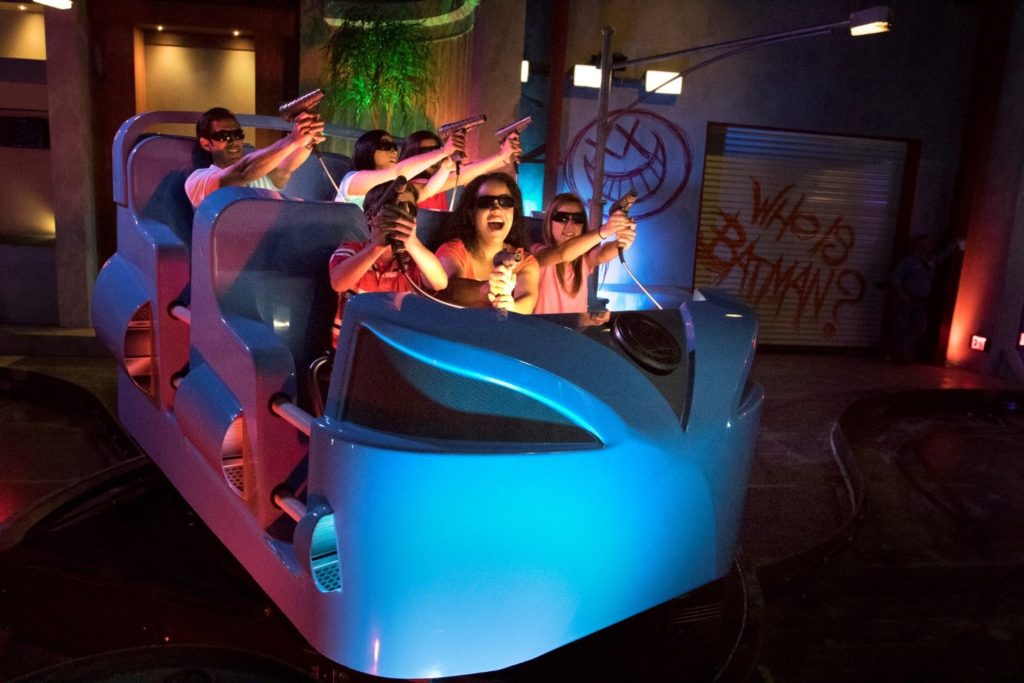
To give the riders an even more convincing experience of being a superhero, Rich and his team applied more special effects than ever. Battle for Metropolis uses various effects that bring riders very close to the action. One of the most notable is when riders pass through the scene with Joker (animatronic) mounted on top of his canon. He aims and shoots riders with ‘laughing gas’ (smoke); next comes an explosion (live fire effect) out of one of the gas barrels!
Moreover, the team managed to implement the first interactive fog screen, which they innovated on Alien Invasion. Those kinds of special effects give riders the feeling of being a superhero, and in doing so, they enhance the immersive experience of the Justice League IP.
Creating the look of the Joker animatronic was not an easy task. Sally’s first version of the Joker got rejected by Warner Bros. “We sculpted him as a mix from the Joker of Arkham Asylum and the Jack Nicholson Joker. During the WB/DC review, they asked we not pull from any past versions.” Rich recalls feeling pleased by this rejection as it gave more freedom to come up with the character. “He is his own Joker. We took cues from all the past jokers, but Russell Hall (sculpt) and Luda Budnik (art finish) had a blast giving him a completely new look.”
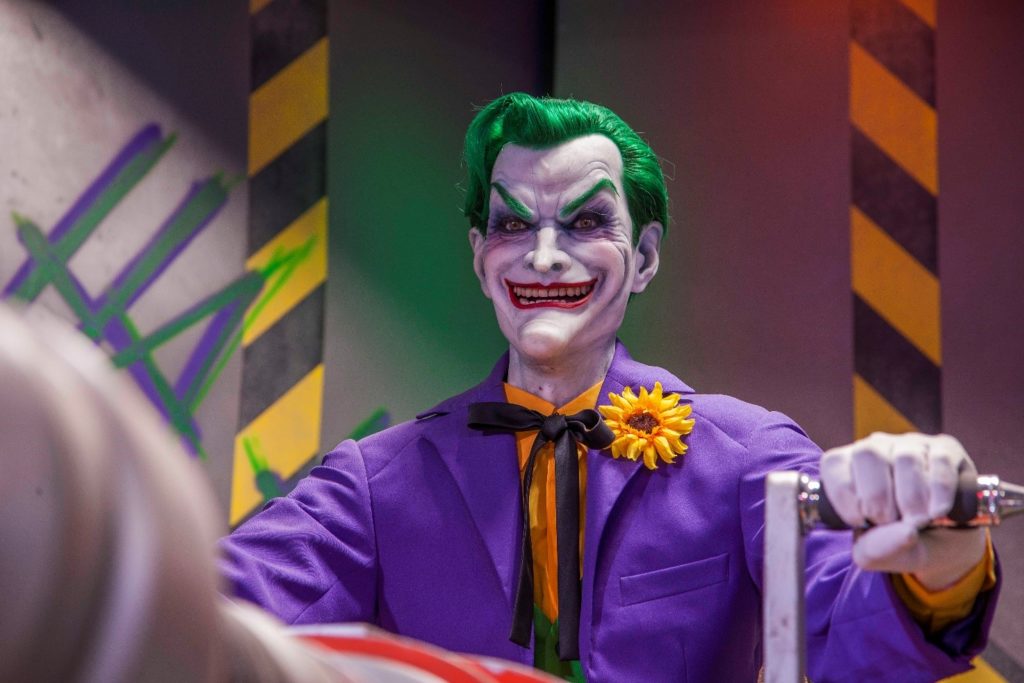
Battle for Metropolis took one year to develop. The first two versions opened in Six Flags over Texas and Six Flags St. Louis in 2015. About three quarters into the development of these first two rides, Six Flags ordered two new versions for Six Flags Mexico (2016) and Six Flags Great America (2016). It is a bit of a risk to order new rides before you know if the original ride is a success, but Six Flags was confident. “They liked how the ride was developing. We brought their corporate team in to show them some pre-visualization of the ride vehicle’s CG and programming, testing some of the ride motion video synching. They were so blown away that they were quickly on board for more.” Three more attractions were developed after that: Six Flags Over Georgia (2017), Six Flags Great Adventure (2017), and Six Flags Magic Mountain (2017), making a total of seven installations in three years.
Sally Dark Rides has not created a new Justice League ride since 2017 but has expressed interest in building new ones: “You never know. It’s an intellectual property that we love working with. There are still a few parks that have these licenses, so anything is possible. The great thing about the Justice League is that they can go on so many different adventures and have so many different stories told about them. It makes sense to roll out different stories in the form of dark rides, like living comics.” The last version (Magic Mountain) of the ride was awarded a Thea Award for Outstanding Achievement in 2018. With this award, the Themed Entertainment Association (TEA) honored the complete line of Justice League dark rides for Six Flags.
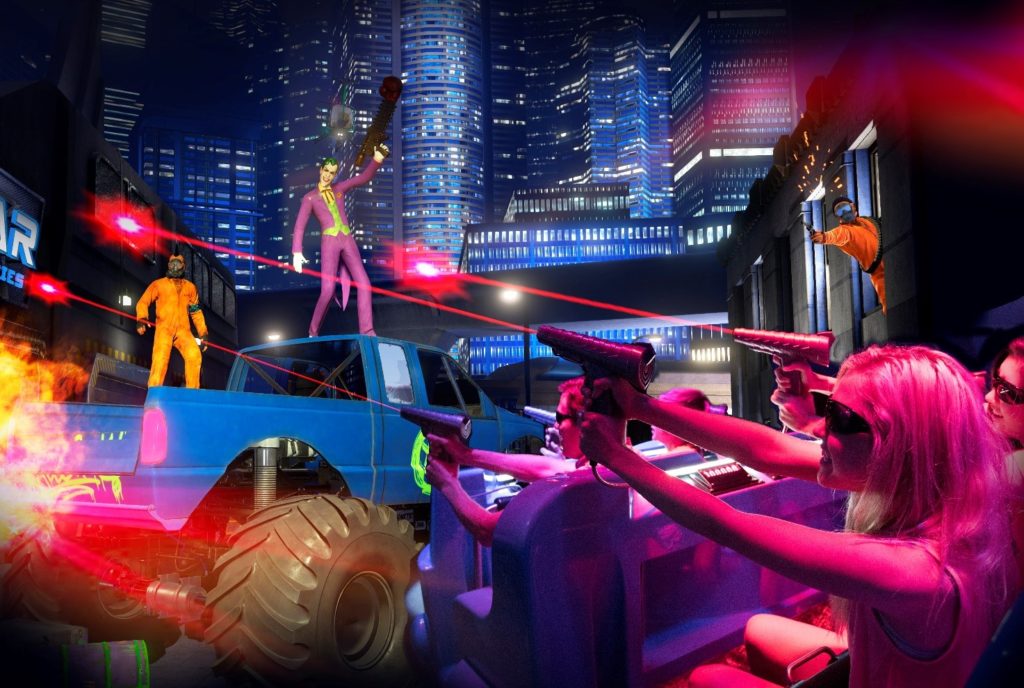
Turning IP into a dark ride
With the honor of receiving the TEA Thea Award, the Justice League adventure for Rich and his team came to an end. Let us look into what it takes to design a dark ride based on such a highly valued IP? “Working with IP is fun, but we also have a blast creating our own dark ride stories. Both have their advantages and disadvantages. We love the high profile of working with a well-known IP, but we also enjoy developing our characters and story settings,” Rich says. “The thing about IP is that the guests already know it. When guests a character on the outside of a dark ride building, they know what to expect when they go inside.” When using IP as a basis for a dark ride, the designer can use the existing backstory. Doing so creates the opportunity for an even stronger ride experience. On the other hand, the dark ride offers an extra dimension to the IP as it allows riders to become part of the world of well-known characters.
The example of the two different Justice League rides clarifies that one IP can create two completely different dark rides. Both Alien Invasion and Battle for Metropolis fit within Justice League’s universe, but they serve a different audience in different parks. Alien Invasion tends to be more of a family adventure ride, while Battle for Metropolis is more appealing to all thrill-seekers. The difference between both rides shows how much freedom a dark ride designer has while still staying true to the original IP.
And that is where we end this interview. We want to thank Rich Hill for his time and extensive explanation of both Justice League rides’ design process. Moreover, we would like to thank Sally Dark Rides for making this interview possible, and especially Karen Staley. We loved talking with them about how Sally Dark Rides turned Warner Bros. hottest IP into a dark ride.
© 2021 Dark Ride Database
Interview by Johan, Erik and Luc
Article by Erik and Luc
Images provided by Sally Dark Rides

